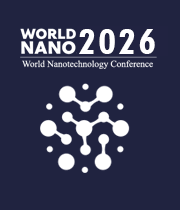Title : Green synthesis of zero-valent iron nanoparticles for arsenic removal from groundwater: Mechanistic and kinetic insights
Abstract:
The present study presents the synthesis and characterisation of nanoscale zero-valent iron particles that have been obtained from two different leaf extracts of guava and mango in order to remove arsenic (As) contamination from groundwater. Results indicate that green nanoparticles produced from mango leaves were the most effective in oxidizing As(III) to As(V). The study determines the optimum parameters, such as adsorbent dosage, concentration, and pH, that significantly affect As(III) removal effectiveness under various experimental setups. Kinetic studies have shown that the adsorption process conformed to a pseudo-second-order model indicating chemisorption to be the rate-limiting step of the reaction. Mechanistic studies using X-ray diffraction (XRD), Fourier-transform infrared spectroscopy (FTIR), and scanning electron microscopy (SEM) indicated that arsenic removal took place predominantly via surface adsorption, redox transformation of As(III) to As(V), and co-precipitation with iron oxyhydroxides generated during the oxidation of nZVI. The results confirm the efficacy of nZVI as a viable substance for arsenic remediation in polluted water systems and endorse its implementation in large-scale treatment methodologies, particularly in areas impacted by naturally occurring arsenic. Future research should concentrate on enhancing the environmental stability of nZVI and assessing its long-term efficacy in intricate groundwater matrices.



